Monetization Models in Photo and Video Apps
 The mobile market is growing rapidly over the last years, as mobile phones have become a major part of our lives. With the widespread of smartphones, mobile phones are used on a daily basis, not only for communication but also for capturing and sharing life moments with videos and photos!
The mobile market is growing rapidly over the last years, as mobile phones have become a major part of our lives. With the widespread of smartphones, mobile phones are used on a daily basis, not only for communication but also for capturing and sharing life moments with videos and photos!
The rapid penetration of smartphones has led investments from big mobile manufacturers that resulted in the addition of complex and technologically advanced features to support better cameras and processors on mobile phones. With proper hardware available nowadays, to support video and photo editing interests, relevant apps in that industry, started to rise.
Every month, different photography and video apps reach the top charts both on Google Play and AppStore. Some of the top free apps in US over the last months, included filter photo AI app FaceApp from FaceApp Inc, photo editing app PicsArt Editor from PicsArt, Adobe Lightroom from Adobe, video maker app Video Editor and Video Maker- Inshot from Inshot, collage maker app Collage Maker from Inshot and many others.
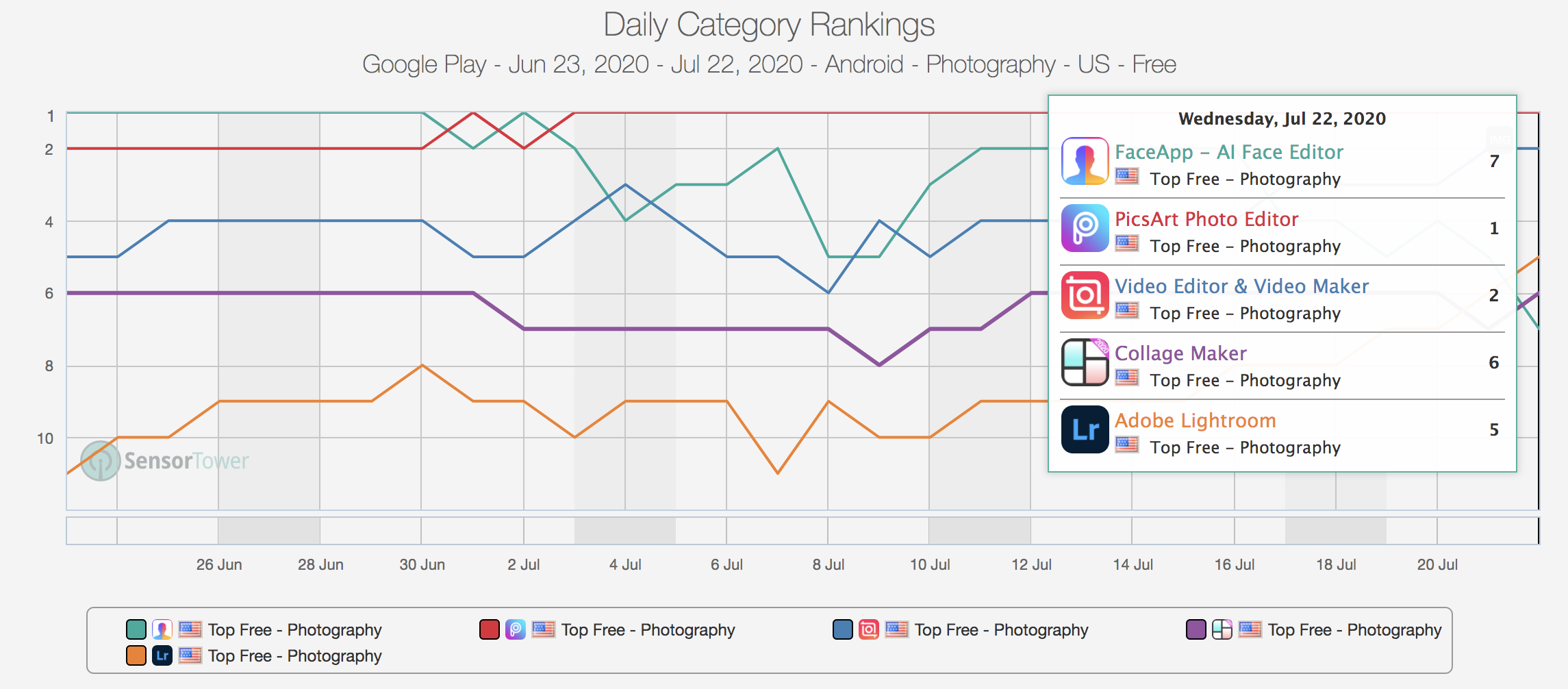
Making money out of Photo and Video Apps
There are a variety of different monetization strategies that publishers of photo and video apps use, to make money off their apps. Some of the most popular strategies are listed below:
Paid Apps
In this monetization model, mobile users have to pay a specific amount upfront, to download and use the app. This seems to be a very popular approach among many big photo and video apps. In order to implement this approach, publishers need to have a trusted brand in the market and invest a big proportion of their budget in marketing actions. Moreover, the value proposition of the app should be clearly communicated upfront and enforced with trust, to drive upfront payments, prior to downloading.
A great example using that model is VivaVideo PRO, a popular top paid video app on Google Play that provides professional video editing & photo slideshow maker tools to its users, in order to export awesome videos! Users interested in using the app, have to pay € 3,79 upfront to download!

In-App Purchases
With the in-app purchases approach, mobile apps offer an option to their users to buy some extra items/features within the app (premium photo filters, video effects, video downloads etc) in exchange for an amount of money. These purchases can be consumable (items can be used once within the app such as lives) and non-consumable ( features to expand the set of the app offer such as photo app filters). In-app purchases constitute a common monetization strategy for photography and video apps especially for unlocking premium features (photo filters, effects, stickers and other).
Glitch Art from Xiujuan Zheng, is a popular app on the App Store where users can upload and edit their photos using special features, or record videos in real-time and edit them. In Glitch Art, users need to pay $0.99 in order to get all glitch texture and remove ads within the app.
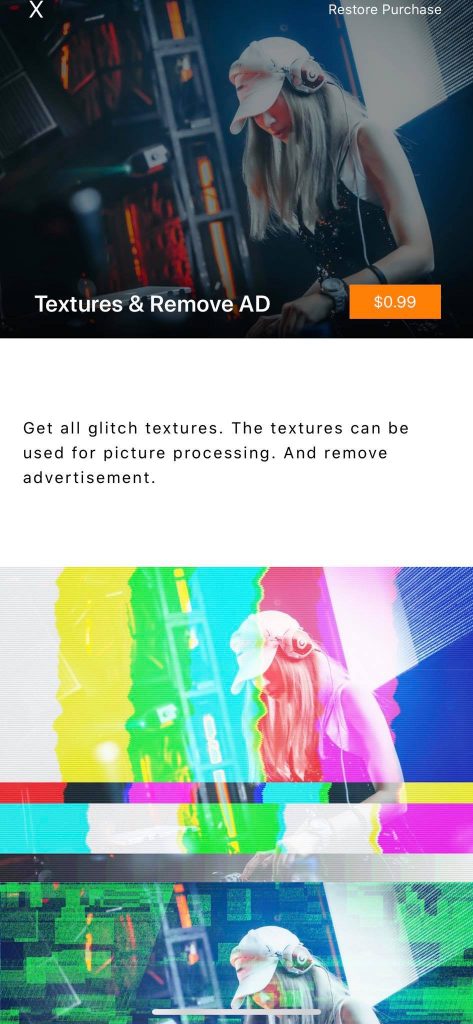
Subscriptions
In-App Subscriptions is also a proven monetization practice, where app users can spend a monthly or a yearly fee in order to use a photo or video app. In this case, payments can be auto-renewable ( users spend a fee for specific updates or services) or non-renewable (users pay a one-time fee for using the app for a fixed period). It is a common monetization strategy for photography and video apps (as well for music apps) and can be easily implemented by trusted brands in the market.
FaceApp that uses this monetization model, took a great hype over the last few months on both Google Play and App Store, reaching the top charts for many weeks. In this app, users have access to an advanced portrait editing technology.
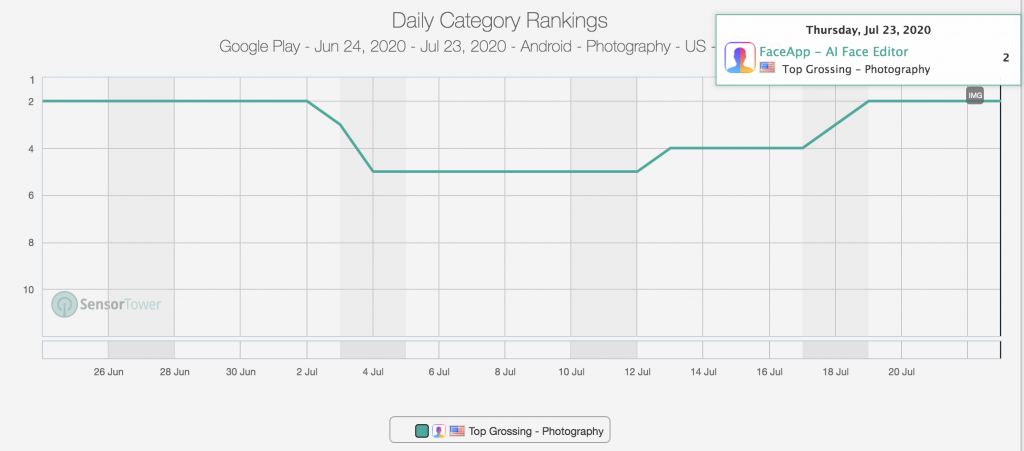
With FaceApp, users can edit and improve their photos or have fun via gender swap, age change, hair styling, colour filters and numerous other features. FaceApp implements the Subscription model by asking on the first-screen users to select a subscription plan (they can either pay € 29,99 per year or € 2,50 per month in order to use this app).
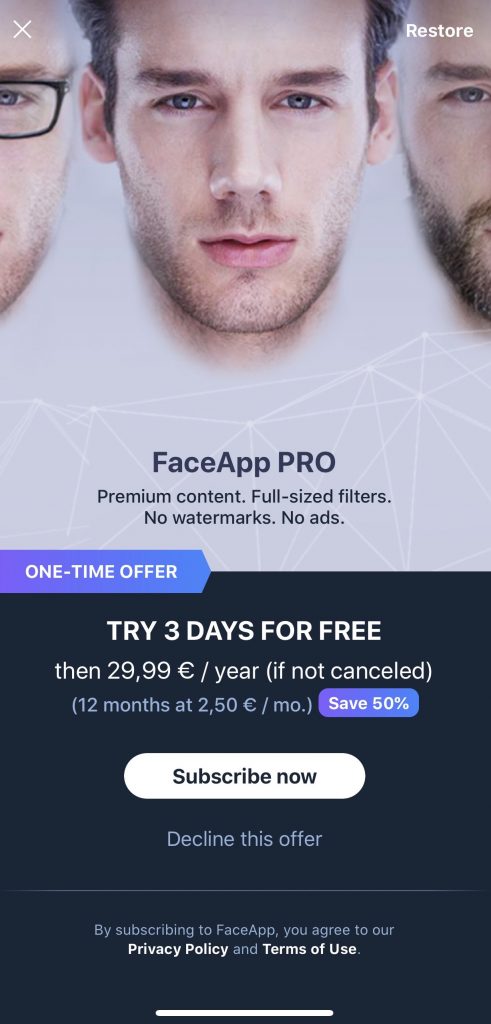
Another great example of an app following the subscription model is StoryZ, a photo & video maker app, that allows users to add animation effects and features to their photos and make moving pictures for TikTok, Instagram and Facebook. StoryZ provides monthly subscriptions for €2.09, yearly subscriptions for €12.99 or a lifetime subscription for € 31.99.
In-App Advertisement
Mobile advertising is one of the most popular app monetization strategies. In that mode, users can download apps for free and publishers can earn money by displaying ads. Advertisements within an app can appear in many different formats (incentivised, non incentivised etc). Photography and video apps tend to use all different types of advertising formats.
Banners
Banners tend to be one of the most widely used ad formats in photo apps. They include images, text or interactive ads that are placed on the top or the bottom of the mobile screen and are visible all the time. These ads can be easily implemented and receive high fill rates on a global scale.
PicsApp Photo Editor by Lyrebird Studio, a photography app that allows users to edit their photos with premium features and make collages, implements advertising as a monetization model in the form of a Banners ads appearing on the top of the screen.
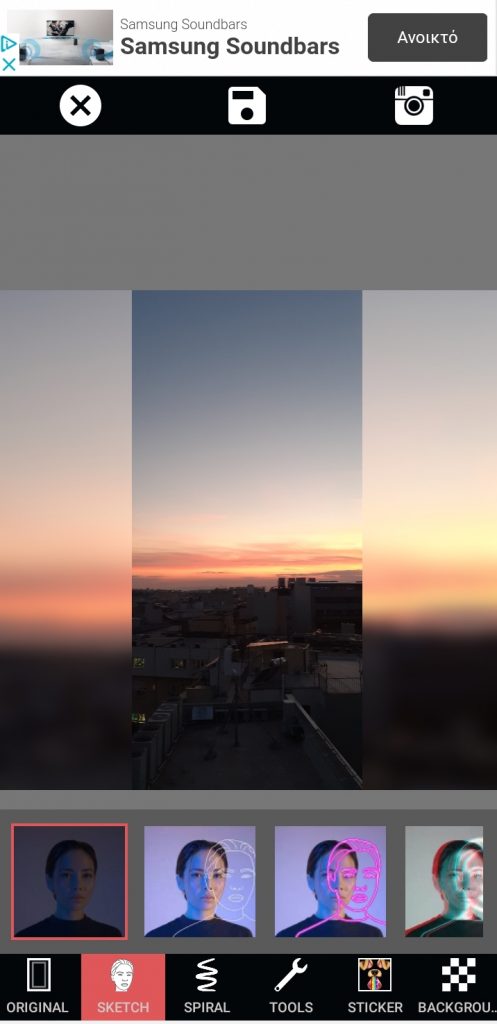
Interstitials
Interstitials constitute interactive and full- screen ads, covering the interface of their host app. This ad format tends to be normally visually appealing and it is preferred by many publishers as they can be easily implemented. On the other side though, they are also considered as highly intrusive if non rendered with a proper ratio or at the right time.
Glitch Cam is a video player and editor app on Google Play providing an amazing video editing tool with different glitch filter effects. Mobile users can create impressive videos and download them directly to their app in order to share them on their social media. Glitch Cam uses interstitials that appear while using the app.
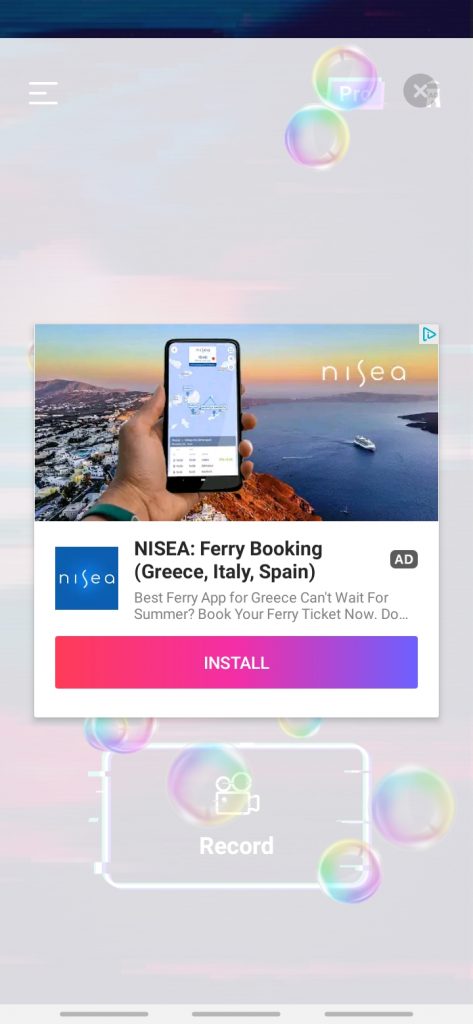
Rewarded Videos
Rewarded Videos are one of the most trendy and high paid in-app advertising approach at the moment and they are widely adapted by the publishers’ community. With this monetization format, publishers incentivise their users to watch a video in order to earn a reward in exchange (e.g unlock a video filter, download a video, remove ads etc).
Story Maker is a photo app that allows users to create amazing Instagram stories via using unique photo filters, frames, layouts, stickers effects and countless other features. Story Makers implements Rewarded Ads in the form of Rewarded Videos through motivating its users to watch a video in exchange for 3 free uses of pro features. In this case, many users will choose Watch Video rather than Subscribe, as they only need to spend some seconds to watch a video and not spend any amount of money for a subscription plan.
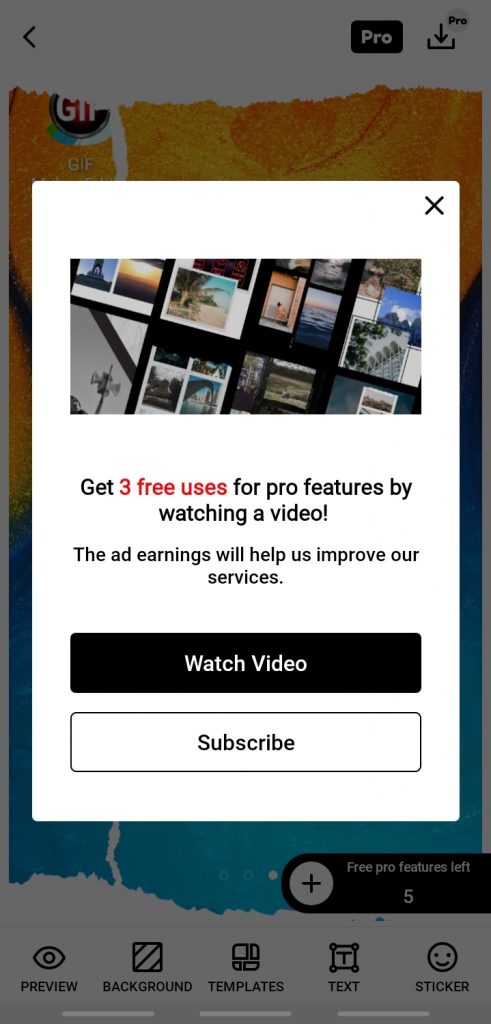
Rewarded Surveys
Another innovative and trending monetization format lately, are Rewarded Surveys. Publishers following this monetization approach incentivise their users to complete a survey in exchange for a reward. In the case of photography and video apps, publishers motivate their users to answer a survey to unlock extra features (e.g unlock photo/video filters, download a photo collage and others).
For example, Baby Photo Frames, a photography app providing a variety of baby photo frames to its users, uses Rewarded Surveys to monetize their audience by providing an ad-free experience in their app.
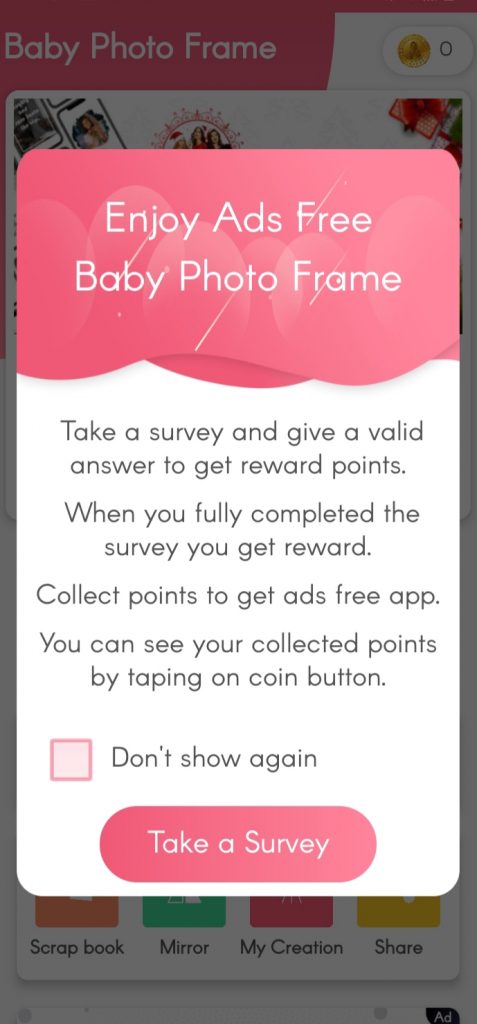
Affiliate and Referral Marketing
Mobile apps using this strategy, prompt their users to perform a specific action in order to earn something. A Referral Program appears in the following ways:
- Publishers incentivise users to refer to other potential app users. The goal of this monetization strategy is to attract new users, that afterwards can increase the publisher’s profit through the increased app usage.
- Publishers refer to other apps/products within their app and can get a commission when their users will download/ use this app or product.
Quickshot, a photo editing app by Lightricks enables its users to create amazing photos via using professional filters, effects, looks and other tools. Quickshot gives users the opportunity to refer a friend and gain extra 3 points to save images with pro features every time a friend downloads the app.
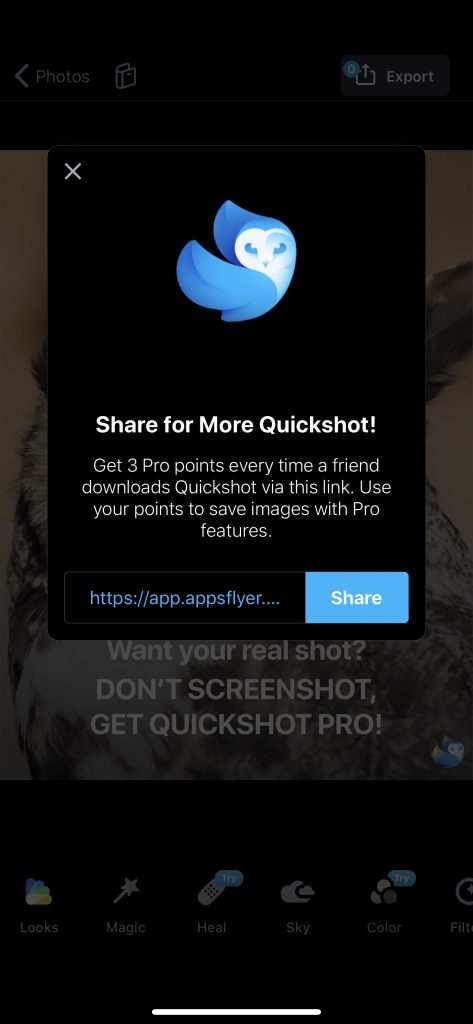
In conclusion, photography and video apps is one of the most trending categories lately on both Google Play and AppStore. They capitalise upon different monetization models while the most commonly used ones, are paid downloads and rewarded videos to unlock features. Deciding which is the best approach, depends always on the context of each app and the value proposition it can provide to its audience.
Do you want to distribute your survey? Pollfish offers you access to millions of targeted consumers to get survey responses from $1 per complete. Launch your survey today.
Global GSK Shingles Survey Insights
Original Insights,The Pollfish Blog
February 24, 2024
Shingles misconceptions: new global survey commissioned and funded by GSK highlights widespread…
B2B Sales Emails: Are they Effective or a Nuisance?
Original Insights,The Pollfish Blog
September 6, 2022
Are B2B sales emails a thorn in your side? Do they drive you crazy? Virtually all white-collar…
